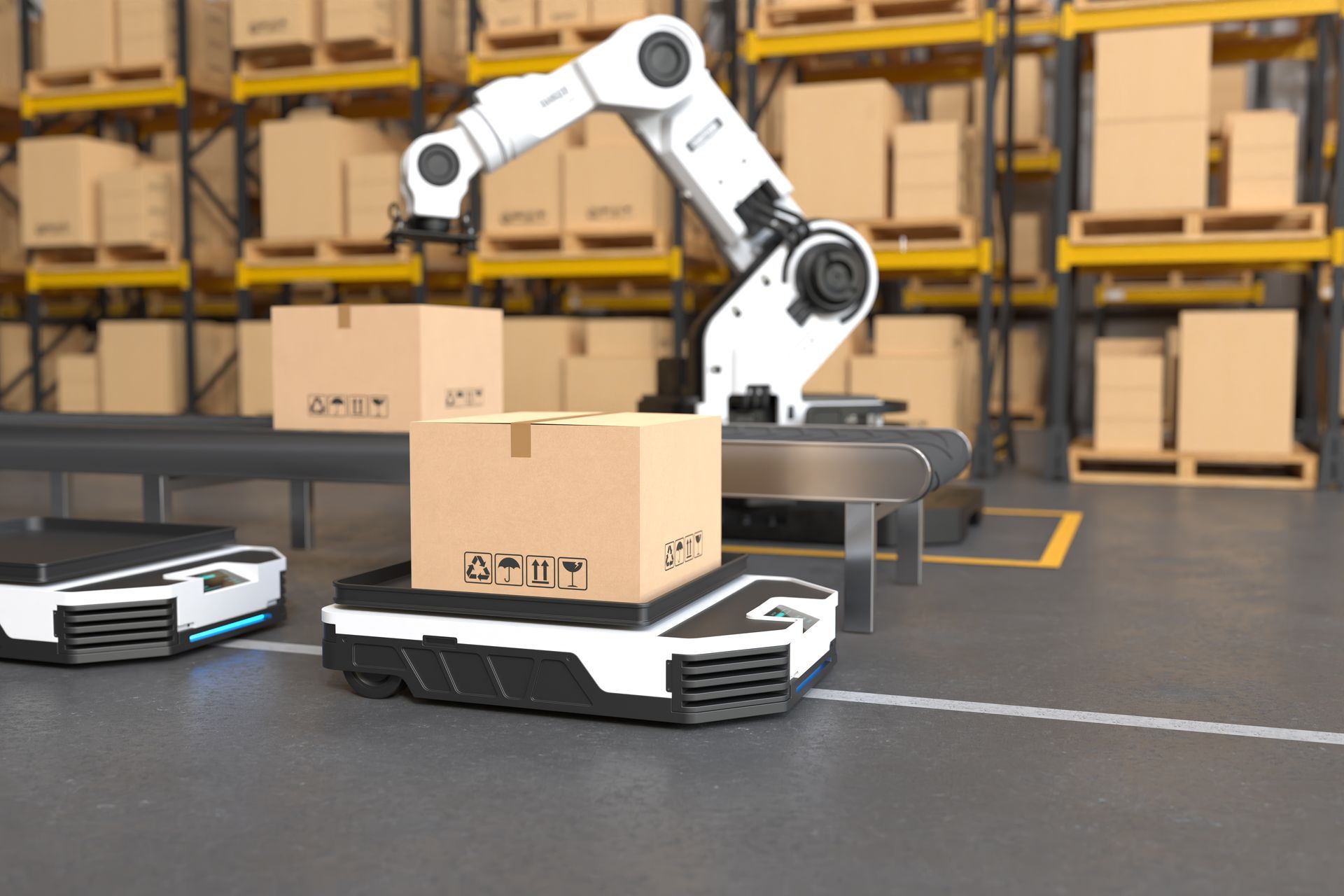Industrial IoT networking is transforming the way industries operate by creating interconnected systems that boost efficiency, reliability, and adaptability. It represents a paradigm shift in the industrial landscape, heralding a new era where technology and innovation are at the core of operational excellence.
Industrial IoT (IIoT) refers to the interconnection of industrial equipment and devices through the Internet, allowing data to be collected, analyzed, and acted upon in real time. This sophisticated network provides an unparalleled level of connectivity, bridging the gap between physical machinery and intelligent software systems. The integration of sensors, communication networks, data analytics platforms, and automation tools creates a seamless ecosystem that enables smarter decision-making and real-time responsiveness.
As industries continue to evolve in the age of digital transformation, understanding the potential of IIoT becomes vital for organizations seeking to remain competitive. The adoption of IIoT isn’t merely a technological upgrade; it’s a strategic move that aligns operations with contemporary business demands. The ability to harness vast amounts of data, coupled with the power to analyze and interpret that data through advanced analytics, offers opportunities to innovate and excel in ways previously unattainable.
The real-time nature of IIoT means that industries can now monitor and respond to changing conditions instantaneously. Whether it’s a sudden change in equipment performance, an unexpected fluctuation in demand, or an emerging opportunity in the market, IIoT empowers organizations to act swiftly and with precision. This agility translates into more resilient operations that can weather uncertainties and capitalize on opportunities.

How does industrial IoT networking work?
IIoT works by interconnecting industrial machines and devices with sensors and software that collect data. This data is then sent to central systems for analysis, where insights can be derived to make informed decisions.
Data collection is the fundamental starting point for industrial IoT networking. Sensors and devices are strategically installed in various industrial equipment, ranging from heavy machinery to delicate instruments. These devices are capable of gathering an array of information, including temperature fluctuations, humidity levels, vibration patterns, pressure readings, and much more. The granularity and specificity of this data depend on the type of sensors used and the particular industry requirements. The objective is to gather real-time, actionable information that can provide insights into the functioning and condition of the equipment.
Once the data is collected, the next phase is to transmit this information to a centralized system where it can be processed and analyzed. This stage involves a complex process of data aggregation and transportation, often necessitating the conversion of raw data into a format suitable for transmission. Various communication methods can be employed, including wired connections like Ethernet or wireless technologies like Wi-Fi and cellular networks. The choice of the network depends on factors such as the volume of data, transmission speed requirements, and the specific industrial environment.
Upon receiving the transmitted data, the next critical step is processing and analysis. This phase often begins with data cleansing, where any noise or irrelevant information is filtered out. Following this, the data may undergo transformation and loading into an analytics system where advanced algorithms, possibly incorporating artificial intelligence and machine learning, are applied. The goal here is to dissect the data, identify patterns, and derive meaningful insights that reflect the actual conditions and performance of the industrial equipment.
The strategic value of IoT development and data analytics
The final stage in Industrial IoT networking is to convert the insights derived from data analysis into concrete actions within the industrial system. Depending on the findings, automated actions may be triggered, such as adjusting equipment parameters to optimize performance or sending alerts to human operators for intervention. In some cases, the system might initiate preventive measures if potential failures or inefficiencies are detected. This phase bridges the gap between data and decision-making, enabling a proactive and responsive industrial environment that leverages technology to enhance productivity, safety, and sustainability.
Key components of industrial IoT networking are as follows:
- Sensors: These are the eyes and ears of the IIoT system. They detect changes in physical conditions like temperature, pressure, light, etc. Different sensors can be used for various applications, depending on the specific needs of the industry.
- Communication network: This can be wired or wireless and serves as the conduit for data flow between devices. Options include Ethernet, Wi-Fi, cellular networks, and specialized industrial protocols like Zigbee or Modbus.
- Data processing & analysis tools: These are the brains of the IIoT system. They may include cloud-based or on-premises servers utilizing AI and machine learning algorithms to identify patterns, trends, and anomalies in the data.
- Human-Machine Interface (HMI): This allows human operators to interact with the IIoT system. It could be a dashboard displaying real-time data or controls allowing manual adjustments.
The complexity and functionality of Industrial IoT networking make it a powerful tool for modern industrial applications. By understanding its various components and applications, industries can utilize IIoT to drive innovation, efficiency, and growth. With continuous advancements in technology, the potential applications and benefits of IIoT continue to expand, making it a crucial aspect of the industrial landscape.

Wide range of industrial IoT networking applications
The applications of IIoT are as varied as they are impactful, touching virtually every aspect of industrial operation. From predictive maintenance and resource optimization to quality assurance, supply chain management, and compliance monitoring, IIoT provides a suite of tools that empower organizations to operate more efficiently, responsibly, and competitively.
One of the groundbreaking applications of industrial IoT networking is in the predictive maintenance area. Through continuous monitoring and analysis of equipment, IIoT systems can identify signs of wear and tear, unusual behavior, or other indicators that a machine might fail in the near future. This ability to predict failure before it happens allows organizations to schedule maintenance proactively rather than reactively. By addressing issues early, companies can avoid unexpected downtime and the associated costs, leading to more efficient operations and significant savings.
The industrial sector often requires the consumption of various resources like energy, water, and raw materials. Industrial IoT networking plays a crucial role in tracking and optimizing the utilization of these resources. By constantly monitoring consumption levels, evaluating efficiency, and providing insights into potential wastage, IIoT enables organizations to make informed decisions about resource allocation. This can lead to more sustainable use of resources, reduced operational costs, and an overall more environmentally friendly operation.

Quality is paramount in any production process, and industrial IoT networking provides an indispensable tool for maintaining and enhancing quality standards. Through constant monitoring of production processes, industrial IoT networking can detect deviations from predefined quality parameters, allowing immediate correction. This ongoing oversight ensures that quality standards are consistently met across all stages of production. The result is a higher quality end product, increased customer satisfaction, and a strengthened brand reputation.
Managing a complex supply chain can be a challenging task, but industrial IoT networking offers a solution by enabling real-time tracking of materials and products. With continuous visibility into the location and status of goods, companies can more accurately forecast delivery times, optimize inventory levels, and make data-driven decisions to enhance the overall efficiency of the supply chain. This level of control translates into a more agile and responsive supply chain, better alignment with customer demands, and a competitive advantage in the marketplace.
Compliance with environmental regulations and ensuring the safety of workers are critical aspects of industrial operations. industrial IoT networking technology can aid in monitoring environmental factors such as emissions, waste disposal, and energy consumption, providing accurate data to ensure compliance with regulatory standards.
Additionally, industrial IoT networking systems can track safety parameters within a facility, like air quality or hazardous conditions, allowing timely interventions to protect workers’ well-being. By integrating environmental and safety monitoring, organizations can foster a culture of responsibility and accountability, aligning operations with legal requirements and societal expectations.
How do you build one?
Understanding the specific needs and objectives of an organization is the foundation of any successful IIoT implementation. This involves a thorough assessment of the current systems, identifying areas where IIoT can add value, and defining clear objectives.
Whether it’s increasing efficiency, reducing downtime, improving quality, or achieving compliance, having a well-articulated goal aligns the project with the broader business strategy and ensures that all subsequent efforts are directed toward fulfilling that goal.
Choose the right technology
The selection of the right technology is a critical decision that can make or break an industrial IoT networking implementation. This includes choosing the appropriate sensors to collect relevant data, deciding on the communication network that suits the industrial environment (whether wired or wireless), and selecting data processing and analysis tools capable of providing meaningful insights.
A clear understanding of the requirements and a careful evaluation of the available technologies are essential to making the right choices that will support the intended objectives.

Design the network architecture
Creating a robust network architecture is a complex task that requires careful planning. This involves laying out the network topology, ensuring that all devices are properly connected, and creating pathways for data flow that are efficient, scalable, and secure.
Considerations should include the layout of physical locations, integration with existing systems, cybersecurity measures, and future expansion possibilities. A well-designed network architecture ensures smooth data transmission and scalability as the system grows.
Implement and test
The implementation phase for industrial IoT networking is where the plan comes to life. This involves installing sensors, setting up communication networks, configuring data processing tools, and integrating everything into a cohesive system. Initial testing on a smaller scale or through a pilot project allows for identifying any potential issues or gaps in the design.
Rigorous testing ensures that the system functions as intended and that any problems are addressed before a full-scale rollout.
Monitor and optimize
Once the industrial IoT networking system is up and running, continuous monitoring and optimization become crucial. Regularly reviewing the system’s performance helps in identifying areas for improvement, whether it’s enhancing efficiency, reducing latency, or improving data accuracy.
Regular updates, adjustments and fine-tuning keep the system aligned with the evolving needs of the organization and ensure that it continues to deliver value.
In a global economy characterized by rapid change and intense competition, the role of industrial IoT networking as a strategic asset cannot be overstated. It’s no longer an optional upgrade but a necessary investment for any industry aiming to thrive in the modern world.
By utilizing industrial IoT networking, organizations can unlock new levels of efficiency, adaptability, and innovation, positioning themselves at the forefront of industrial evolution. The convergence of machines, data, intelligence, and human expertise sets the stage for a future where industries are not merely surviving but thriving, driven by the relentless pursuit of excellence and the endless possibilities of the connected world.
Featured image credit: onlyyouqj/Freepik.





